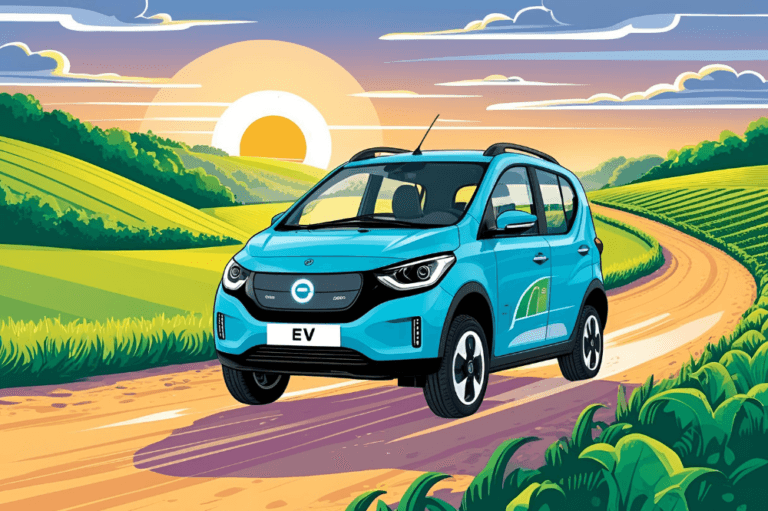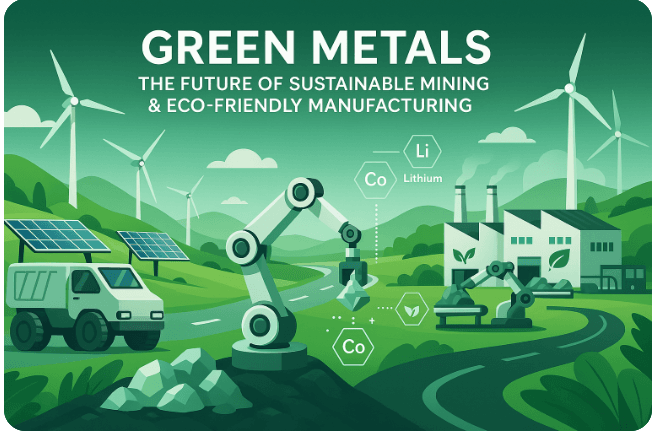Introduction to Solar Paint Technology
Solar paint technology is a breakthrough innovation in renewable energy, capturing the imagination of scientists, environmentalists, and homeowners alike. Imagine a world where the very walls of your house, the surface of your car, or even public infrastructure could generate electricity simply by being coated with a specialized paint. This is the promise of solar paint, a revolutionary concept that combines the power of solar energy with the versatility and simplicity of paint.

What is Solar Paint?
Solar paint, also called photovoltaic paint, is a unique form of paint infused with energy-capturing materials that allow it to convert sunlight into electricity. This paint essentially transforms any coated surface into a solar panel, creating a versatile and nearly invisible solution for generating solar power. Unlike traditional solar panels, which are often bulky and limited in placement, solar paint can be applied to irregular surfaces and difficult-to-reach locations, opening new possibilities for energy-efficient design.
Benefits of Solar-Powered Paint for a Sustainable Future
One of the primary advantages of solar paint technology is its potential for aesthetic integration. Buildings and structures that may not be suited for solar panels due to architectural or visual constraints can now harness solar power inconspicuously. Beyond aesthetics, solar paint can potentially reduce installation and maintenance costs, making renewable energy more accessible to a broader range of applications.
From an economic perspective, solar paint could democratize solar energy by making it affordable and adaptable. For instance, while solar panels require skilled labor for installation, solar paint could be applied by any professional painter, significantly reducing labor costs. This technology is particularly promising for buildings, vehicles, and public infrastructure, creating a pathway to energy independence for a larger population.
By exploring the transformative possibilities of solar paint, this technology offers an exciting alternative to traditional solar panels, bringing the world one step closer to a sustainable future.
How Solar Paint Works
At its core, photovoltaic paint functions similarly to traditional solar cells, capturing sunlight and converting it into electrical energy. However, the science behind solar paint involves a more flexible and innovative approach that allows it to be applied as a liquid coating rather than requiring rigid panels.
The core mechanism of solar powered paint revolves around photon absorption. When sunlight hits the painted surface, tiny particles called semiconducting nanoparticles within the paint absorb photons, or light particles, which excites electrons. This process creates electron-hole pairs—gaps where electrons used to be—within the material. The movement of these excited electrons generates a small electric current, which can be harvested and used as energy.

The technology behind solar paint is powered by conducting materials embedded in the paint, such as titanium dioxide or perovskite compounds. These materials facilitate the transfer of electrons, effectively turning the painted surface into a miniature solar panel. While still in developmental stages, solar paint technology has the potential to transform a wide range of surfaces into renewable energy generators.
Solar Paint Efficiency and Ongoing Challenges: Effiecency is one of the main challenge currently solar paint is facing. Traditional solar panels convert around 15-20% of sunlight into electricity, while early versions of photovoltaic paint currently reach about 6-8% efficiency. Researchers are working to improve this by experimenting with different nanoparticles and compounds that could boost energy capture and electron flow. Achieving higher efficiency rates in solar paint will be crucial for its future applications and widespread adoption.
Photovoltaic Coating Technology: Unlike conventional solar cells, which require complex silicon-based structures, photovoltaic coatings can be applied directly to surfaces using various methods, such as spray painting. This versatility makes solar paint a highly attractive solution for structures and vehicles that can’t accommodate traditional solar panels. As researchers continue to refine photovoltaic coating technology, the efficiency and durability of solar paint are expected to improve, making it a competitive option for energy production in diverse settings.
Types of Solar Paint: A Look at Different Technologies
Solar powered paint is not a single type of paint but rather an umbrella term encompassing various technologies, each with unique characteristics, materials, and applications. Let’s take a closer look at the primary types of solar paint currently in development, which include hydrogen-based solar paint, perovskite-based solar paint, and experimental varieties with specific benefits and limitations.
- Hydrogen-Based Solar Paint: Hydrogen-based solar paint represents a fascinating approach to renewable energy. This type of solar paint uses a moisture-absorbing material that splits water molecules into hydrogen and oxygen in the presence of sunlight. The hydrogen produced can be stored and used as a fuel source, offering a unique twist on traditional solar energy by producing a clean, storable fuel rather than electricity. While still experimental, hydrogen-based solar paint has tremendous potential, particularly for applications where direct electricity isn’t needed, and hydrogen fuel can serve as an alternative energy source.

- Perovskite-Based Solar Paint: Perovskite compounds are a leading material in the solar paint industry due to their impressive light-absorbing properties and lower cost compared to silicon-based solar cells. Perovskite-based solar paint is notable for its efficiency potential, with some lab tests achieving efficiencies that rival silicon solar cells. Perovskites also have the advantage of being highly customizable, allowing researchers to fine-tune their properties to maximize energy capture. However, durability remains a concern, as perovskites can degrade when exposed to moisture and high temperatures, so research is ongoing to enhance the stability of this type of solar paint.
- Experimental Solar Paint Technologies: Beyond hydrogen and perovskite, scientists are experimenting with other compounds to enhance the effectiveness of solar paint. For example, some experimental solar paints incorporate carbon nanotubes, quantum dots, and other nanomaterials designed to improve efficiency and durability. These cutting-edge materials hold promise but are still in the early phases of research, as scientists work to balance energy production with scalability and environmental safety.
Each type of solar paint presents its unique set of advantages and challenges, providing insights into the potential future directions for solar-powered paint types in renewable energy.
Applications of Solar Paint Technology
Revolutionizing Buildings with Solar Paint Applications: One of the most promising solar paint applications is in the architectural and construction industries, where the technology could transform building surfaces into energy-generating assets. Coating walls, roofs, and other exterior surfaces with solar paint could enable entire buildings to generate clean electricity without the need for traditional solar panels. This is especially beneficial in urban environments where rooftop space is limited, or where aesthetic considerations make traditional solar panels less feasible. With solar paint on buildings, large commercial complexes, residential structures, and even historical buildings could become energy-efficient without compromising their visual appeal.
Automotive Solar Paint: Automotive solar paint offers an innovative approach to integrating renewable energy into the transportation sector. By applying photovoltaic paint to the exteriors of vehicles, manufacturers can create cars, trucks, and even buses that partially power themselves through solar energy. This technology could extend electric vehicle (EV) battery life, reduce charging frequency, and ultimately enhance energy independence for EV users. This approach not only supports sustainability but also aligns with growing consumer demand for eco-friendly vehicles. Currently, the automotive industry is actively researching ways to maximize the durability and efficiency of solar paint on car exteriors, as these surfaces are constantly exposed to weather conditions, dust, and impact.

Solar Paint for Boats and Marine Vessels: Another practical application is on boats and other marine vessels, where uses of photovoltaic paint could support energy needs for lighting, navigation, and communication systems. Unlike land-based vehicles, boats often have limited access to charging infrastructure, making renewable energy sources like solar paint particularly useful. Solar paint could be applied to the surface of the vessel, transforming it into an autonomous power source while reducing dependence on fuel or bulky solar panels. This application is especially promising for unmanned surface vehicles (USVs) and yachts, where energy-efficient, low-maintenance solutions are increasingly desirable.
Innovative Applications: A highly innovative, yet underexplored, application for solar-powered paint is in creating solar roads and parking lots. By applying solar paint to pavement and parking lot surfaces, entire urban areas could become energy-generating zones. This approach could also enhance energy availability in remote locations without access to traditional power sources. Solar-powered roads could integrate directly with the power grid, providing a sustainable energy supply for street lighting, traffic signals, and electric vehicle charging stations. Although still in experimental stages, these applications hold tremendous potential to reduce urban carbon footprints and offer new renewable energy solutions.
Expanding Solar Paint Technology to Consumer Products: Beyond large-scale infrastructure and vehicles, solar paint could revolutionize smaller consumer products, transforming household appliances, electronics, and outdoor furniture into self-sustaining energy generators. For instance, solar paint on garden furniture, fences, or even outdoor advertising billboards could create new sources of renewable energy that integrate seamlessly into daily life. Future developments could even enable portable solar-paint-coated devices, which would allow people to recharge their electronics on the go.
Bringing Renewable Energy to Hard-to-Reach Surfaces: A unique advantage of solar paint is its adaptability, allowing it to be applied to irregular and hard-to-reach surfaces where conventional panels cannot be installed. For example, industrial sites, warehouses, and remote installations could use solar paint on machinery, scaffolding, and other surfaces that traditionally serve no purpose beyond structural support. This versatility makes solar paint a powerful tool for expanding renewable energy access, especially in locations with limited options for solar panel installations.
Efficiency Challenges and Developmental Hurdles
Solar Paint vs. Traditional Solar Panels: One of the significant challenges of solar paint technology lies in its efficiency rates. Currently, solar paint efficiency averages around 6-8%, a notable gap compared to the 15-20% efficiency range of traditional solar panels. While solar paint has immense potential, these efficiency limitations make it less competitive for applications where high power output is necessary.
Research and Innovations Targeting Efficiency Boosts: Scientists are actively exploring ways to increase the efficiency of photovoltaic paint. For example, studies are examining how new materials, such as quantum dots or carbon nanotubes , could increase light absorption and electron flow, pushing efficiency levels closer to those of conventional solar panels. Perovskite-based paints have shown particular promise in this regard, with some experimental results nearing efficiency levels of silicon solar cells. However, achieving stable performance with perovskites remains a hurdle, as they are prone to degradation under moisture and heat.
Production Challenges: Another challenge facing solar paint is the transition from lab-scale experiments to large-scale production. Current solar paint developments are mainly produced in research laboratories, where small batches are crafted under controlled conditions. For solar paint to become commercially viable, manufacturing processes must advance significantly to enable cost-effective and scalable production. This will require further breakthroughs in material stability, especially as different climates and environmental factors could affect solar paint’s longevity and effectiveness.
Limitations of Photovoltaic Paint in Commercial Use: Besides efficiency and production issues, solar paint technology faces other limitations of photovoltaic paint that impact its commercial use. For instance, durability under harsh weather conditions and mechanical wear is a concern. The delicate nanomaterials used in photovoltaic paint are vulnerable to environmental degradation, which could reduce the lifespan of the paint on external surfaces. Researchers are actively working to enhance the resilience of these materials to create a viable, long-lasting product that can withstand real-world conditions.
Environmental Impact and Sustainability
Environmental Benefits of Solar Paint Technology: The environmental impact of solar paint is largely positive, making it a promising option for sustainable energy production. Unlike traditional solar panels that require significant amounts of silicon, metals, and other resources for production, solar paint uses fewer materials and can be applied directly onto existing surfaces. This results in a much lower environmental footprint, as there is minimal need for new resources, reducing both manufacturing emissions and material waste.
Eco-Friendly Paint Technology: One of the unique advantages of solar paint is its potential to be applied to existing structures, such as building walls and car exteriors. By utilizing surfaces that already exist, solar paint minimizes the need for new construction or additional support infrastructure, further reducing environmental impact. Traditional solar panels, by contrast, often require separate mounting systems and additional materials, which can increase their carbon footprint. This form of green energy paint offers a lower-waste solution that integrates seamlessly with current structures.
Sustainable Solar Technology and Long-Term Impact: In the long term, solar powered paint has the potential to make renewable energy more accessible and less intrusive. Its application on large surfaces, including urban buildings and transportation, could help reduce the carbon footprint of cities and transportation systems, contributing to climate change mitigation. Additionally, as research improves the durability and efficiency of solar paint, its lifespan and productivity may rival traditional solar panels, cementing its role as a sustainable energy technology for the future.
Future Outlook: The Path Toward Commercialization
Progress Towards Commercialization: Despite promising lab results, commercialization of photovoltaic paint is still in its infancy. Key players in the renewable energy sector, alongside university research teams, are conducting field tests to evaluate solar paint’s durability and efficiency under various environmental conditions. The future of solar paint lies in achieving a reliable product that can meet both performance and cost standards required by consumers and businesses alike.
Estimating Solar Paint Costs Relative to Traditional Solar Panels: One of the most attractive aspects of solar paint is its potential for lower installation costs. Since solar paint does not require the same mounting and installation infrastructure as traditional panels, it could ultimately be a more economical option. However, current production costs remain high due to the complex materials and specialized manufacturing processes. Researchers are optimistic that as technology advances, the cost of solar paint will decrease, making it competitive with traditional solar panel installations in the residential and commercial markets.
What’s Needed for Market Viability: For solar paint to enter mainstream markets, several key advancements are necessary. First, improved stability and efficiency are critical to make it a viable competitor to traditional panels. Second, scalable production methods are essential to bring down costs and make the product accessible on a mass scale. Finally, rigorous testing for durability and environmental resilience will help ensure that solar paint can withstand long-term exposure to sunlight, rain, and other natural elements. With these advancements, solar paint could redefine the future of solar energy technologies.
Conclusion: The Potential of Solar Paint in the Renewable Energy Landscape
Solar paint represents an exciting renewable energy innovation with the potential to revolutionize the way we approach solar energy generation. By turning ordinary surfaces into electricity-generating assets, solar paint could expand renewable energy’s reach in previously thought impossible ways. Buildings, vehicles, and other surfaces coated with solar paint could significantly reduce global reliance on fossil fuels, marking a substantial step forward in environmental sustainability.
As solar paint technology advances, it could have transformative effects across various industries. From architectural design to automotive engineering, the applications of solar paint could change how we think about energy integration into everyday structures and systems. This sustainable energy paint offers an exciting path for achieving energy independence, potentially lowering energy costs and decreasing emissions worldwide. While solar paint technology is still developing, its potential impact on the renewable energy landscape is undeniable. Solar paint could become a central player in the future of renewable energy by combining affordability, sustainability, and scalability. As researchers continue to overcome its challenges, solar paint holds promise as a powerful tool in the global shift towards a greener, more sustainable future.
Explore below other interesting blogs:
- Exploring Wave Energy Converters – Dive into how ocean waves are harnessed as a powerful, sustainable energy source through innovative converter technologies.
- Harnessing Soil Electricity: Eco-Friendly Soil Lamps – Discover the science behind soil-based electricity generation and how eco-friendly soil lamps can light up spaces with minimal environmental impact.
- SolarWindow: Revolutionizing Smart Building Technology – Uncover how SolarWindow technology is transforming building surfaces into power generators, paving the way for energy-efficient urban architecture.
- Algae-Powered Lamps – Learn how algae-powered lamps offer a sustainable lighting solution through photosynthesis, providing green energy for off-grid and urban areas alike.






